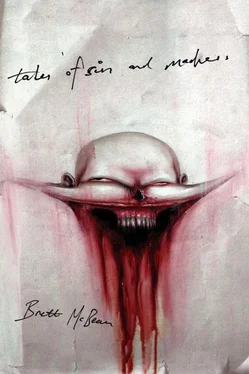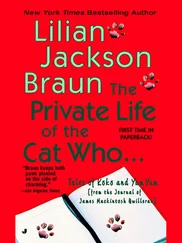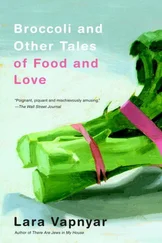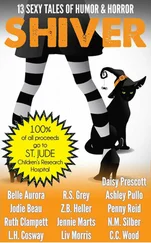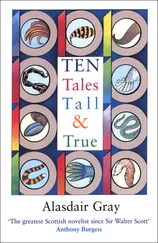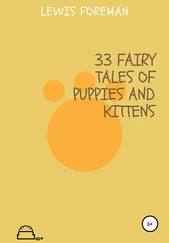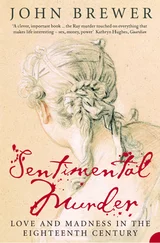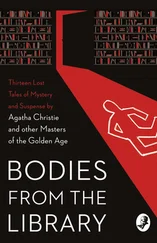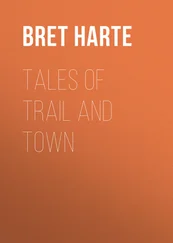“I put the noose around his neck myself and then watched as he dropped through the hatch, his neck snapping as quick and clean as you like. There ain’t no way his spirit is up and walking around after that. Also, it just don’t make sense that Deeming’s spirit is restless and wandering around cutting up prostitutes. I know what he done was horrible, but he must’ve been a religious man, because when the Sheriff asked him if he had any last words before the lever was thrown, you know what he said? ‘Lord receive my spirit’. And the Lord don’t refuse a man such a request, no matter what he done wrong here on Earth. So Deeming’s spirit has to be in heaven, not trapped down here, causing more pain and terror. You know what I reckon? Now I don’t mean no disrespect, but I reckon some newspaper man is behind the murders, doing it to drum up business. They say it was a newsman who wrote that Dear Boss letter and come up with the name Jack the Ripper, not the killer, in order to sell more papers. That’s what these recent murders smell like to me — a way to sell more papers.”
In the final part of this special report, we’ll take a look at the recent prostitute murders, where they were killed, and the similarities to two of the Ripper murders four years ago. We’ll also hear the startling revelations from a Melbourne Gaol doctor as well as a prison inmate of Deeming’s, revelations which are bound to make you think twice about whether it’s the work of a copycat killer, or something otherworldly.
THE ARGUS, THURSDAY, SEPTEMBER 15, 1892
MAD FRED PART 3
—♦—
LITTLE LON — THE SCENE OF THE LATEST PROSTITUTE MURDERS
—
WAS DEEMING JACK THE RIPPER? STARTLING REVELATIONS
—
THE MADMAN OF MELBOURNE: COPYCAT KILLER OR GHOST?
The area known as Little Lon is well-known for its vice and crime. A dirty, cramped collection of weatherboard cottages and brick buildings, it’s a dark, smelly enclave full of prostitution, opium dens and the roughest pubs in Melbourne. This small slum area on the fringes of Melbourne city is a far cry from the theatres and boutiques of Collins Street. While it’s not quite the desperate slums of London’s East End, where thousands of sad and poverty-stricken men, women and children live in absolute squalor, Little Lon still isn’t a place any respectable person would want to travel through after dark. There are respectable families living in shacks amidst the choking stench of rotting refuse and industry, but they are outnumbered by the drunk and drug-addled denizens who crawl out after dark and while away the nights in a haze of immorality.
Here you’ll find the many brothels owned by Caroline Hodgson, better known as Madame Brussels. Mostly two-story weatherboard terraces and large brick houses, these brothels seem to be everywhere on Lonsdale Street. You’ll also find a scattering of pubs, such as The Duke on Little Lonsdale, where the roughest types swill beer and gin till the early hours. Away from the meagre lighting of the main streets lie dark laneways, where vice and the unmistakable stink of opium chokes the rotten air.
It was down one of these grim alleyways where the first prostitute was found murdered, in the early hours of August 31st. 42-year-old Emma Doyle, originally from Ireland, was found with her throat cut and her abdomen sliced open, her innards protruding slightly from the wound. Doyle, a known prostitute, had last been seen strolling east down Little Lonsdale Street, alone, at around 2am. At just after half-past three, a man coming home from work found her body lying on the bluestone outside his tiny brick cottage in Castletown Place, a dark, narrow alley running off Little Lonsdale.
The time and date of the murder, as well as the injuries, were all consistent with that of Jack the Ripper’s third victim, Mary Ann Nichols, whose mutilated body was found in Buck’s Row, Whitechapel.
Standing outside the row of six red-brick cottages in Castletown Place, I get a sense of déjà vu. The area eerily resembles the photos of Buck’s Row from the Whitechapel murders of four years ago; it’s almost like I’ve stepped back in time and place. Shining my bull’s-eye lantern on the ground outside the brick cottage, I can still see traces of blood on the cobblestone and in the gutter. I can almost see the mad killer crouched by the body, first slicing the poor woman’s neck, and then going to work on her stomach. Just like the Ripper slayings, nobody saw or heard anything, even though half a dozen families live in the string of cottages where the woman was murdered.
It’s just past 10 o’clock in the evening, the fog thick and the smell of rotting waste strong and putrid, but speaking with some of the locals, it’s clear that Little Lon stays open all night. According to one local man, who drinks regularly at the Black Eagle Hotel on Lonsdale Street, this small district flows with people all night. There’s no difference between 10 o’clock and 3 o’clock. A street walker I came across agreed — there are people everywhere, all the time, coming and going. And yet, with the murder of Doyle, nobody saw or heard a thing.
It’s true, Castletown Place is an especially dark alley, with only one gas lamp not quite half-way down, leaving most of the alley cast in darkness. Still, standing here on a chilly spring night, I see people walking by constantly along Little Lonsdale. Not ten minutes go by before someone walks by me in the alley — either leaving for work, coming home from work, or using the alley for solicitous purposes. It’s hard to imagine how a person could kill and slice open a woman and not be caught red-handed.
But, that’s just what happened in Castletown Place.
And also what happened just last week, the second Melbourne prostitute murder.
Less than a mile from Castletown Place, to the north of Little Lonsdale, is another alley, buried among the cramped housing and filth of the squalid city block.
Cumberland Place is the long middle street within a grid of six other streets. It’s one of the wider alleyways in Little Lon, and in it resides families from Ireland, China and Eastern Europe. Bare-footed children run and shriek and laugh down the sloping alley, as dirty as the street itself. Horse manure sits in piles next to scraps of rubbish. Lines of clothing streak the back and even front yards and most of the cottages, while kept neat by the residents, are still flimsy-looking shacks that seem ready to tumble at the slightest breath of wind.
Standing on the corner of Cumberland and McCormack Place, the morning chill having given way to a bright, uncharacteristically warm September day, I wonder how the killer ended up here, deep within the warren that is Little Lon. The nearest brothel is a few streets away, and though there are pubs in the vicinity, they’re not as notorious as the ones found on the main thoroughfares, such as Lonsdale Street. Yet, sometime in the early hours of the 8th of this month, a woman was brutally slaughtered in the backyard of the corner house on Cumberland Place. Like the murder a week prior, and like those in Whitechapel, no one heard or saw a thing — even though a family of five were sleeping inside the house.
I’m shown into the backyard by one of the residents of the green weatherboard cottage, a lady by the name of Joyce Snell. The yard is entered from the street by a side door, one that, according to Mrs. Snell, is never locked. “Nobody locks their doors in this neighbourhood,” she said. “We all know one another, people are always coming and going, day and night. You don’t need a key to get into the backyard; anyone can open the door and step in.”
The yard itself, like many in the area, is small and, aside from the toilet in the far corner and a table along one wall, sparsely populated. A path of cobbled bluestone leads from the back door steps to the small outhouse. Mrs. Snell shows me the spot where the woman was killed.
Читать дальше
